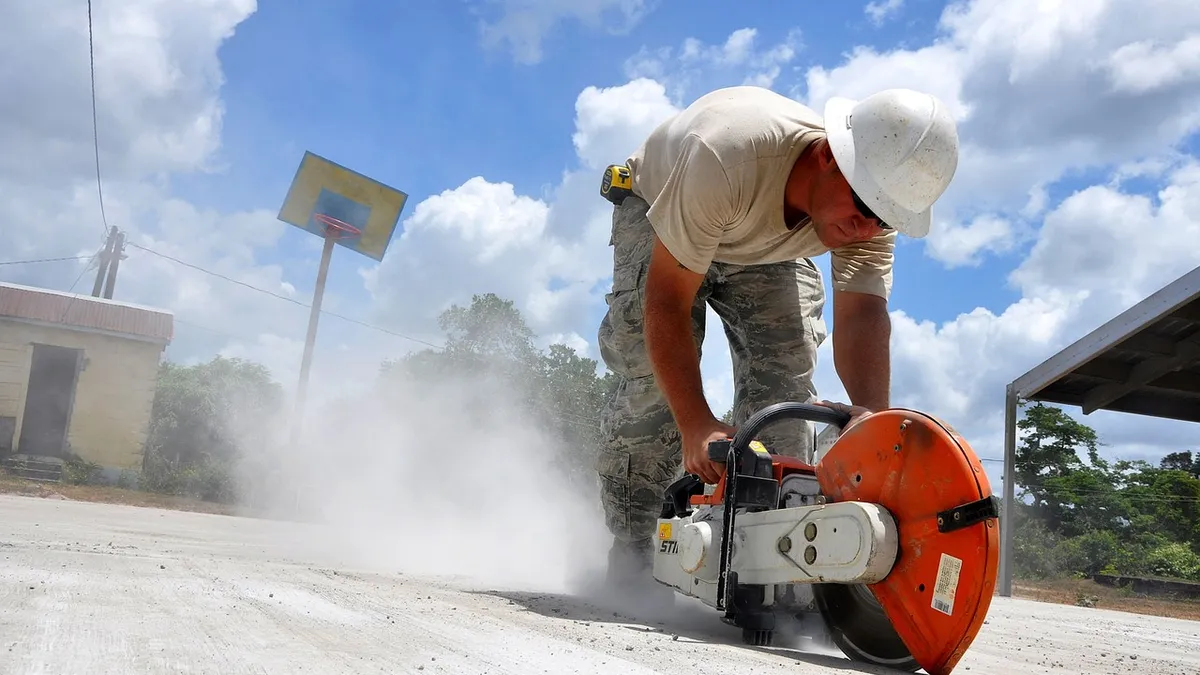Dive Brief:
- After years of deliberation and attempts from industry groups to block the ruling, the Occupational Safety and Health Administration — under the Department of Labor — issued its final rule Thursday morning that aims to protect workers from exposure to silica dust.
- In the construction industry, the new rule would reduce the allowed exposure to silica from 250 micrograms per cubic meter over an eight-hour period to 50 micrograms, according to The New York Times. The new standards take effect on June 23 of this year, and construction companies must comply within one year, according to OSHA.
- OSHA's new rule also mandates that companies must record instances of worker exposure to silica and provide medical exams every three years for workers exposed to the substance for long enough periods to necessitate the use of a protective respirator for 30 days or more a year.
Dive Insight:
Construction industry groups have been some of the biggest opponents to the rule since it was first proposed in 2013 — the first change in silica exposure standards since 1970. Many have said OSHA should have ramped up enforcement of the rule already in place, rather than instituting the new regulation. Builders and trade groups in all sectors of the industry partnered to oppose the new rule and formed the Construction Industry Safety Coalition, which includes the Associated General Contractors of America, Associated Builders and Contractors, and National Association of Home Builders.
In March 2015, the consortium of 25 trade associations sent a report to OSHA that claimed the agency’s proposed requirements for lowering the exposure to silica on job sites could cost the industry billions of dollars more than the government estimated. The group also predicted that the proposed rule — which was somewhat altered before the final ruling — would lead to the loss of more than 33,000 full-time jobs among contractors, equipment suppliers, and building products manufacturers.
Changes between the proposed 2013 rule and the final rule include: dropping mandates for protective clothing to mitigate exposure; permitting limited use of dry sweeping and dry brushing of clothing or surfaces contaminated by silica; and requiring applicable employers to create a written plan for exposure control, according to Bloomberg.
Crystalline silica — found in soil, sand, granite, quartz, and other natural substances common in construction projects — is produced when stones and minerals are blasted, cut, or drilled. Workers exposed to silica dust for long periods can experience respiratory problems and silicosis, a chronic lung disease, according to safety experts. OSHA said the new rule will save the lives of more than 560 construction workers and prevent approximately 1,080 cases of silicosis among the industry's employees.
Brian Turmail, senior executive director of public affairs for the AGC, told Construction Dive, "Our initial reaction is that this appears to be a lost opportunity to improve workplace health and safety. Instead of crafting new and innovative ways to get more firms to comply with the current silica standard, which we know would save even more workers each year, administration officials have instead opted to set a new standard that is well beyond the capabilities of all current air filtration and dust removal technologies."
He added, "Wishing firms could meet this new but unattainable standard will undoubtedly deliver many positive headlines for the administration, but it will do regrettable little to improve workplace safety. We will continue our exhaustive review of this new regulation, consult with our members and decide on a future course of action that will best serve the health and safety of millions of construction workers across the country."
Thomas E. Perez, the U.S. labor secretary, told The Times that he expects companies and industry groups to possibly sue the Department of Labor to block the new rule.
Not all building industry groups have opposed the rule, as North America's Building Trades Union said after the announcement, "North America's Building Trades Unions is pleased OSHA has issued the final silica standard ... Put simply, the OSHA silica standard will protect construction workers from getting sick or dying due to silica dust exposure."
The AFL-CIO said in a statement, "Today millions of workers can literally breathe easier knowing that they will not have to sacrifice their lungs and their lives by working in deadly silica dust."
Editor's note: This story has been updated to include new information.













